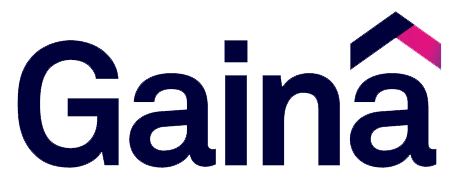From product specifics through to leveraging the insights required to make sales, the right beverage software can help distributors sell more.
It’s not rocket science, it’s just data–and a little help from your strategic software partner.
Specific software for beverage distributors serves up sales
The obvious advantage of drinks industry specific software is that it sets up sales from the outset. To sell to clients effectively – whether they are bars, supermarkets or wholesalers – a drink distributor will require accurate and detailed product information. Having this available at a glance could be the difference between securing an impulsive purchase, or exposing the rep’s lack of product knowledge.
Generalised software will typically require costly customisation to make it suitable for the drinks trade. However, specialist software should come with the setup required for optimal processes and reporting for your sales data. These will be based on the unique interactions between drinks sales and other business processes, considering factors such as spoilage and duty payments. The task of bringing standard software up to the level of specialist software would be a task of constant re-engineering, as well as re-organising, meaning staff lose time on administrative work and change management, instead of focusing on revenue generating activities.
Embrace analytics and prosper (with a little help from distribution management software)
According to McKinsey & Company’s Sales Growth Survey, 53% of fast-growing sales organisations rate their use of analytics as moderately or extremely effective. Beer, wine and drinks sellers that embrace analytics tend to prosper most, and are getting the most value out of their ERP systems.
Analytics can empower wide-ranging sales insights, from assessing product profitability, to predicting client behaviour, and providing tailored product recommendations. It enables improvements to sales figures, both at a strategic level and in tactical implementation.
In order to maximise the potential of analytics, distributors should look to specialist software that’s built to allow relevant data to feed into reporting tools, built to meet their specific needs.
Maximising lifetime client value through effective service
Ultimately, the value of any client acquisition will depend on the quality of service a distributor provides. A better service secures higher customer retention and increases the value of your average sale.
The right drinks software supports better customer service in diverse ways, with returnable containers/packaging an excellent case-in-point. Many distributors have certain beverages in their portfolio (especially draft beer) which require transportation in returnable containers. With non-specialised software, this industry-specific requirement will likely require expensive system add-ons – or worse still, an additional paper trail filling the gap between action and software. Specialised drinks software removes the prospective cost, human error and ‘nuisance’ factors for distributors, and provides a smooth, efficient returnable product facility for clients. Through encouraging long-term custom, software specialisations of this nature can increase your overall revenue by providing a unique value to the customer.
How to find and fix flaws in your existing software
Now we’ve discussed some of the advantages of specialised drink distribution software, let’s look at how to match up performance gaps in your current software with potential solutions.
The process should start with a gap analysis that measures your existing software performance against your goals. Create a spreadsheet, and make columns under the following headings:
- Team challenge – aspects of sales team activity which are (or could be) supported by your software, e.g. upselling, order fulfilment, product and promotions offer; your team’s pain points.
- Current state – how does your current software support this aspect of sales.
- Team outcome – how could software support the team to better meet its challenges?
- Action items – what needs to be done to bridge the gap from the current state to the goal state?
Combine your own ideas with input from trusted stakeholders to fill the columns with as many target items as you deem useful. We recommend involving colleagues in order fulfilment, fellow sales team members and senior IT staff, plus carefully selected regular clients and drink suppliers.You could end up with something like this:
| Team challenge | Current state | Team outcome | Action items |
| Discounts /promotions | Sales agents offer sales and promotions specified by management | Sales agents offer most relevant discounts and promotions based on client data indicating likelihood of sale | Link sales data to sales agent software to automate recommendations |
| Order fulfilment | Sales agent contacts warehouse to place client orders | System instructs warehouse to process orders placed by sales agents | Automate order creation communications |
| Communicating client offer | We can find info on the system | System automatically sends tailored product recommendations to clients | Implement automated product recommendation system |
| Setting sales targets and goals | Goals are defined manually by the sales team | Goals are defined algorithmically, according to internal and market data (plus internal input) | Feed internal and external data sources into a goal-setting algorithm |
| Order booking | Orders processed via call from sales agent to warehouse | Order information sent to warehouse instantly upon completion of a sale | Implement an order booking software |
With your team challenges, target outcomes and action items clearly defined, you’ll be well placed to map out how you will update or upgrade your software to support your sales team goals.
If you have only a few simple action items, you may find add-ons and customisation\’s sufficient to achieve the desired result. Or, if you have numerous and/or complex action items, investing in a specialised drinks software would likely be your best-value option. Either way you’ll stand to enjoy enhanced sales management – and the likelihood of improved sales performance as a result.

